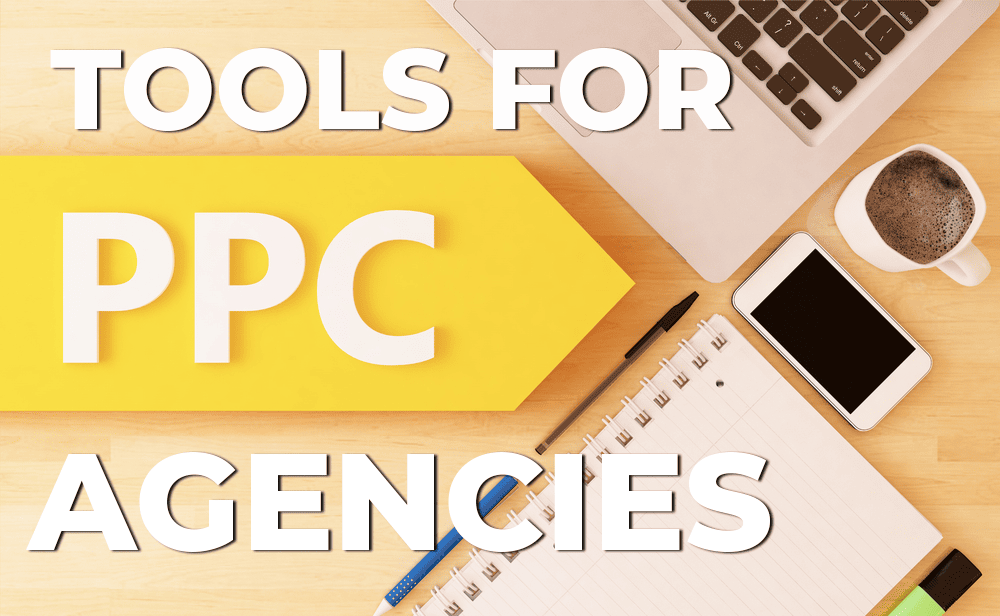The fact that the Google Ads platform has held a significant share in the online advertising market is well known. Brands find Google’s network highly effective for showcasing their products and services to consumers, with its diverse array of advertising options adding to its appeal.
However, there are other ways of acquiring and engaging with customers outside of using Google Ads. If your campaign has reached a plateau or if you simply want to diversify your reach and penetrate new groups of viewers, then there are a number of other options to consider.

Reasons to Diversify from Google Ads
The reasons behind choosing a diversified approach to your ad platform strategy, rather than relying on one avenue. Three main reasons for expanding your approach include the following:
- Escalating expenses per click (CPCs) and intensifying competition within Google Ads.
- Diminished effectiveness as impression share grows.
- Unexplored audiences and user segments.
Dealing with Increasing CPCs and Competition
Recall the times when Google Shopping listings were free, and the cost-per-click for branded keywords was comfortably under $1. Those were simpler days, accompanied by lower expenses.
In the present landscape, it’s not uncommon to come across industries where CPCs soar past $50 for each click.
With marketing budgets stretched thin and CPCs reaching new heights, brands are witnessing a decline in website traffic. This situation provides a strong rationale for exploring alternatives beyond Google Ads.
A Significant Impression Share Doesn’t Always Translate to a High Return on Ad Spend (ROAS)
Are your Google Ads campaigns hitting a performance plateau? Make sure to assess your Search impression share metrics. If your brand consistently appears almost 100% of the time, you’ve essentially saturated your existing market.
Not only is your target market saturated, but your campaigns might also be underperforming due to repetitive ad exposure to the same audience.
You can also read: The Importance of Search and SEO
These users might fall into categories such as:
- Those who’ve already made a purchase of your product or service.
- Individuals in the browsing or exploration phase.
- People who’ve determined your product isn’t the right fit for them.
Striving for maximum impression share can potentially lead to reduced cost-efficiency metrics, such as a diminished return on ad spend (ROAS) or lower conversion rates.
Unexplored Audience Opportunities and User Segments
While Google enjoys widespread popularity, it isn’t the exclusive default search engine for everyone.
With Microsoft introducing the AI-powered Bing earlier this year, it has become a significant contender.
Numerous platforms offer the opportunity to engage with your customers even before they initiate their searches.
Having said that, presented below are my preferred five alternatives to the Google Ads platform.
Microsoft Ads
There are numerous compelling reasons to appreciate Microsoft Ads. As it forges new partnerships with companies like Netflix and Roku, Microsoft’s market share continues to grow. To put it into perspective, Microsoft Bing caters to a staggering 13.2 billion searches per month.
Here are some key factors that make Microsoft Ads attractive:
- Lower CPC historically and less competition.
- Seamless importing of Google Ads functionality.
- Unique audience targeting capabilities.
If your brand falls into a highly competitive industry that’s plagued by high CPCs, then diving into Microsoft Search Ads makes complete sense. The lower CPCs automatically mean more traffic to your brand at an efficient spending level.
If you think running two platforms simultaneously might be too much of a headache, remember that Microsoft has a lot of features like Google Ads and also offers a very friendly import tool.
This tool allows you to control and manage the duplication and migration of certain search campaigns to the platform. And with this feature, there is no need to start from scratch when you want to recreate your best campaigns!
Lastly, it’s worth noting a novel Microsoft feature that Google lacks: a recent collaboration with Roku. This pioneering partnership provides exclusive cross-channel data insights, enhancing targeting options for advertisers and introducing a fresh approach to engaging potential customers.
LinkedIn Ads
For B2B companies, in particular, this platform is indispensable for conducting tests. Not surprisingly, the popularity of LinkedIn Ads has surged over time, resulting in heightened competition. Therefore, if you’re planning to trial the platform, anticipate encountering higher CPCs.
To comprehensively gauge the platform’s impact and potential, it’s advisable to allocate a substantial testing budget (at least $3,000 per month). Don’t let the possibility of elevated CPCs dissuade you. Many B2B companies discover a more qualified user base on LinkedIn.
What does this translate to for businesses?
- Enhanced relevance.
- Increased deal closures.
Given the platform’s effectiveness, many enterprises find themselves willing to invest more in that initial interaction due to its finely tuned-targeting capabilities.
A variety of coveted targeting options are available, including (but not limited to):
- Job Titles (often the priciest).
- Company Industry.
- Job Function.
- Member Skills.
- Member Interests/Groups.
- Company Size.
Moreover, LinkedIn continues to introduce fresh ad formats to encourage novel and engaging content interactions for users. Among the most widely used formats are:
Sponsored Newsfeed Ads
- Single Image.
- Video.
- Carousel.
- Event.
- Document.
Sponsored Messaging Ads
- Message Ads.
- Conversation Ads.
- Lead Gen Forms.
Apple Search Ads
For companies focused on apps, this advertising platform is indispensable. In the past year alone, Apple has significantly expanded its ad placement opportunities and inventory within the app store, more than doubling its offerings.
You can also read: What Are the Main Types of Digital Marketing?
With Apple’s introduction of App Tracking Transparency in 2021, a move that has made attributing ad efforts on other platforms more challenging, Apple enjoys a distinct advantage through its proprietary platform.
App advertisers can take advantage of the following targeting options:
- Device type.
- Location.
- Keyword.
- Customer type.
- Demographics.
Apple Search Ads presently provides the following ad format choices, catering to users at various stages of the funnel:
- Today Tab Ads: This format utilizes a personalized product page created in App Store Connect. It’s suitable for users in the discovery phase.
- Search Tab Ads: Displayed at the top of the search tab when users look for apps, this format appears above organic listings.
- Search Results Ads: This format allows bidding on keywords to appear in the Search Tab results when users perform searches. It employs either the app store listing or a custom product page.
- Product Page Ads: Shown at the bottom of a product page, this format targets users who are actively researching a specific app’s product details.
Apple offers both a Basic platform for newcomers and an Advanced platform for seasoned advertisers. An added benefit is that there’s no minimum spending requirement or initial investment. Apple Ads pricing follows a cost-per-tap (CPT) model, which closely resembles Google’s cost-per-click (CPC) model.
Quora Ads
Quora Ads offers a unique content platform based on questions and answers; that way, you are going to be able to capture the search intent of users. Historically, it is the platform that has remained favored by B2B brands, although more and more B2C brands have been making their marks on Quora in recent times.
Considering over 400 million monthly active users and more than 300,000 unique topics in store, the platform holds immense potential.
Quora not only drives good traffic to your website but also helps in your company’s Brand Authority. Since users are looking for reliable answers and community support, building your credibility as a trustworthy brand will lead to long-term support for your brand.
Since the introduction of Quora Ads, the platform has expanded its offerings to encompass a variety of ad formats and targeting options.
In terms of targeting features, this platform mirrors the capabilities of the Google Display Network and YouTube Ads. These features include:
- Contextual targeting (questions, topics, or keywords).
- Audience targeting (website traffic, customer match, lookalike).
- Behavioural targeting (interests, keywords, or question history).
- Broad targeting (including auto-targeting).
Quora’s selection of ad formats has also grown in recent years. The platform now provides:
- Text Ads.
- Image Ads.
- Promoted Answers.
- Lead Generation Forms.
- Video Ads.
The Trade Desk Platform
This platform offers both a publisher-side and a demand-side platform, with our focus directed toward the demand-side platform (DSP) for advertisers.
You can also read: Financial Stability: 4 Great Ways to Diversify Your Income
If you’re seeking a more regulated experience for Display or Video ads as compared to Google Ads, it’s worthwhile to consider testing The Trade Desk (TDD) programmatic platform. The DSP enhances and interconnects experiences across diverse devices, all while providing the capacity to evaluate performance.
From a targeting standpoint, advertisers have access to an extensive array of audience segments, encompassing both first and third-party data.
Furthermore, advertisers can harness buyer and contextual cues to construct audiences, which incorporate:
- Retail purchases.
- Offline actions.
- Behavioural data.
- In-app data.
- Connected TV data.
The Trade Desk extends access to more than 150 publishers.
Through the programmatic platform, advertisers can access exclusive and premium inventory across the following domains:
- Connected TV.
- Video.
- Audio.
- Digital Out of Home.
- Mobile.
- Native.
- Display.
Very recently, The Trade Desk introduced significant enhancements to its platform, including the unveiling of its new AI platform, Kokai.
Therefore, even though TDD lacks a Search element, the programmatic facet plays an integral role in an overarching marketing strategy.
Final Thought
A successful digital marketing strategy revolves around targeting the appropriate user, precisely when they’re receptive, with a tailored message. Due to the significance of context, timing, and device, this is the opportune moment to investigate alternatives beyond Google Ads.
The platforms mentioned here each possess distinct attributes that can aid in achieving your objectives.
Whether it’s capturing top-of-funnel traffic and building brand awareness, driving purchases, or generating leads, broadening your digital marketing spectrum across various platforms allows you to create a comprehensive marketing strategy that is vital for triumph.
Would you like to read more about Google Ads alternatives to diversify and grow related articles? If so, we invite you to take a look at our other tech topics before you leave!
![]()












